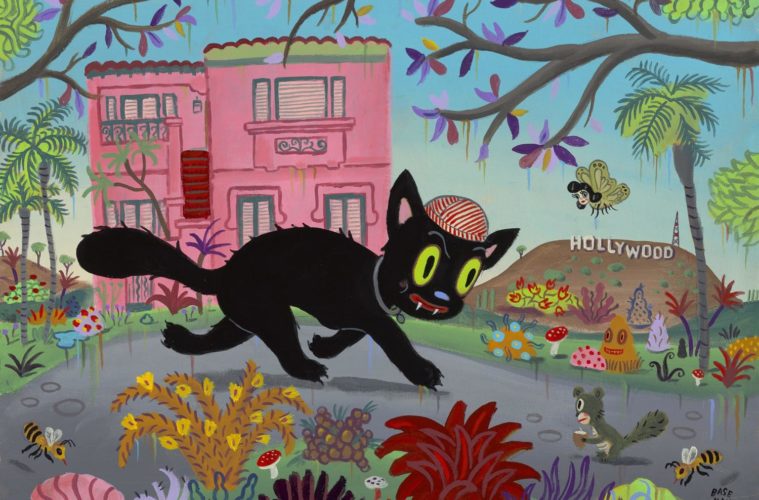No one loves Halloween more than Gary Baseman. The prolific artist — whose artwork is chock full of ghosts, witches, black cats, ghoulies, ghost girls, fantasy beings, masked and costumed characters, and folk spirits — has always been drawn to the holiday. Its history and accouterments have inspired his work in visual and performance-based art for his whole career. And his best friend, collaborator, muse, and ferocious companion of the last decade-plus was the legendary Blackie the Cat — a feline force of nature whose exploits Baseman has enthusiastically chronicled in everything from paintings to animations, editions, album covers, immersive sculptural installations, and now, an entire gallery show.
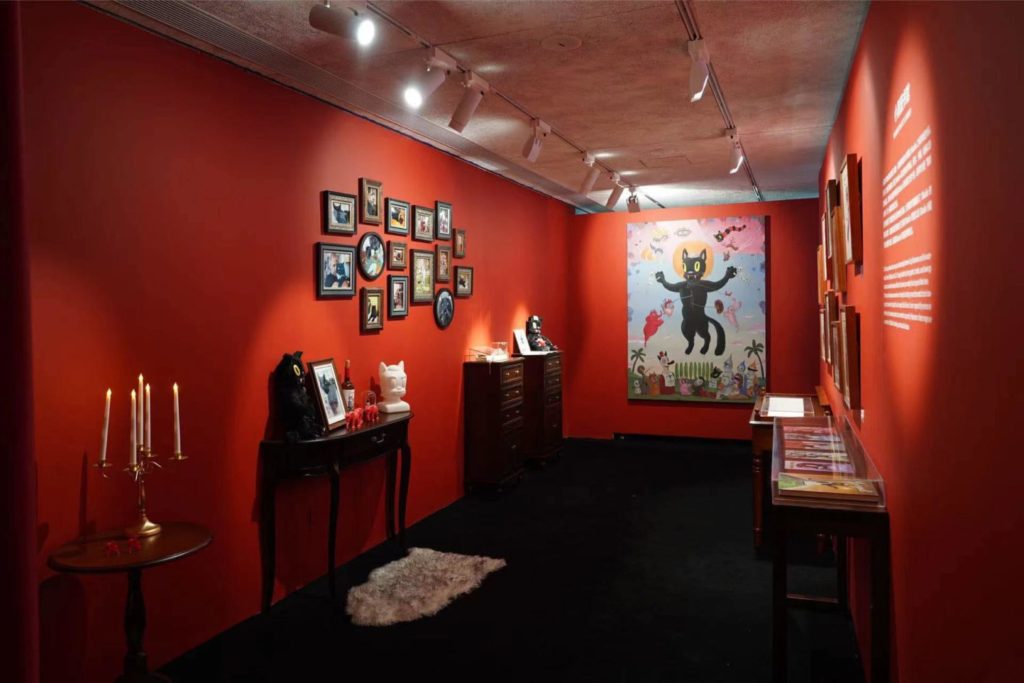
Gary Baseman: Nine Lives at Wrong Gallery, Beijing, installation view, 2022
Nine Lives at Beijing’s Wrong Gallery is a multimedia exhibition and installation gathering the adventures and existential lessons of Blackie the Cat, whose long and regal lives were a profound inspiration not only for Baseman but to thousands of fans and followers around the globe. Nine Lives explores how former stray Blackie the Cat reinvented himself over and over during his 18 years of life, transforming himself into the guide of pop culture icons, spiritual leaders, family and friends, a movie star in his own right, and Baseman’s own alter ego.
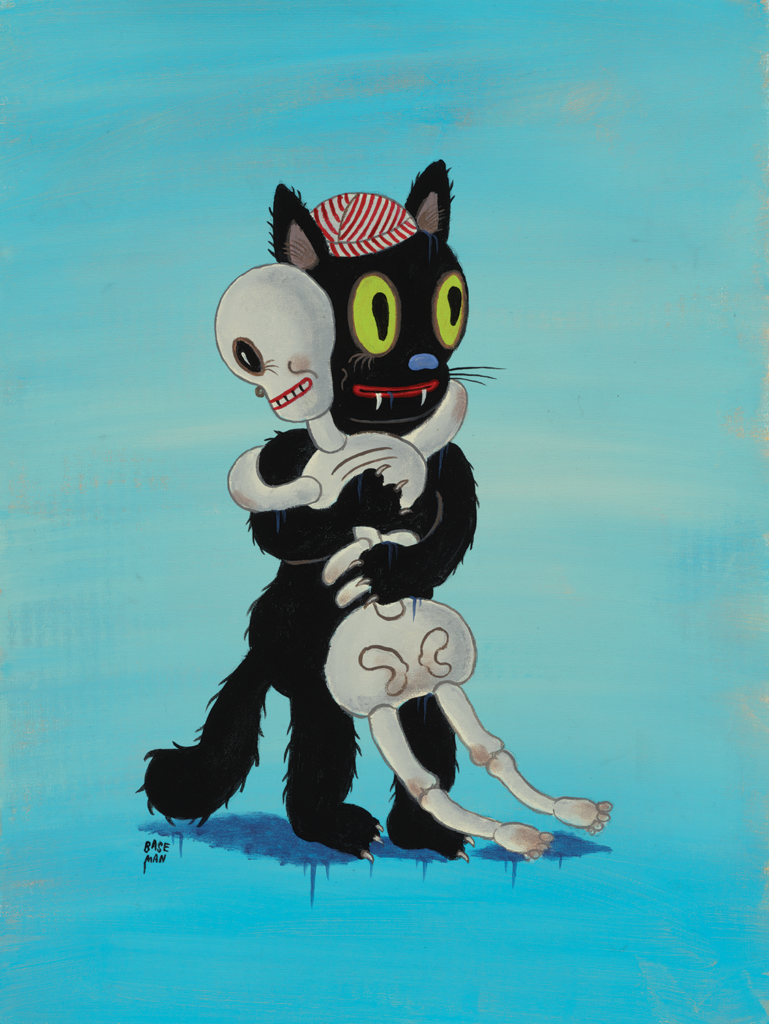
Gary Baseman: Nine Lives, 2022
This large-scale (and potentially expanding and traveling) exhibition lionizes Blackie across new original drawings, paintings, and sculptures, and the first video installation of “The Blackie the Cat Show” and “The Long Stroll,” based on the cat’s suddenly adopted habit of walking slowly and deliberately around the neighborhood in the final months of his life, as if to take it all in while he could. Both adorable and funny, occasionally caustic, and unexpectedly emotional, Blackie and his love for the artist are explored in charming narratives that contain profound meditations on the nature of love, friendship, mortality, loss, and family.
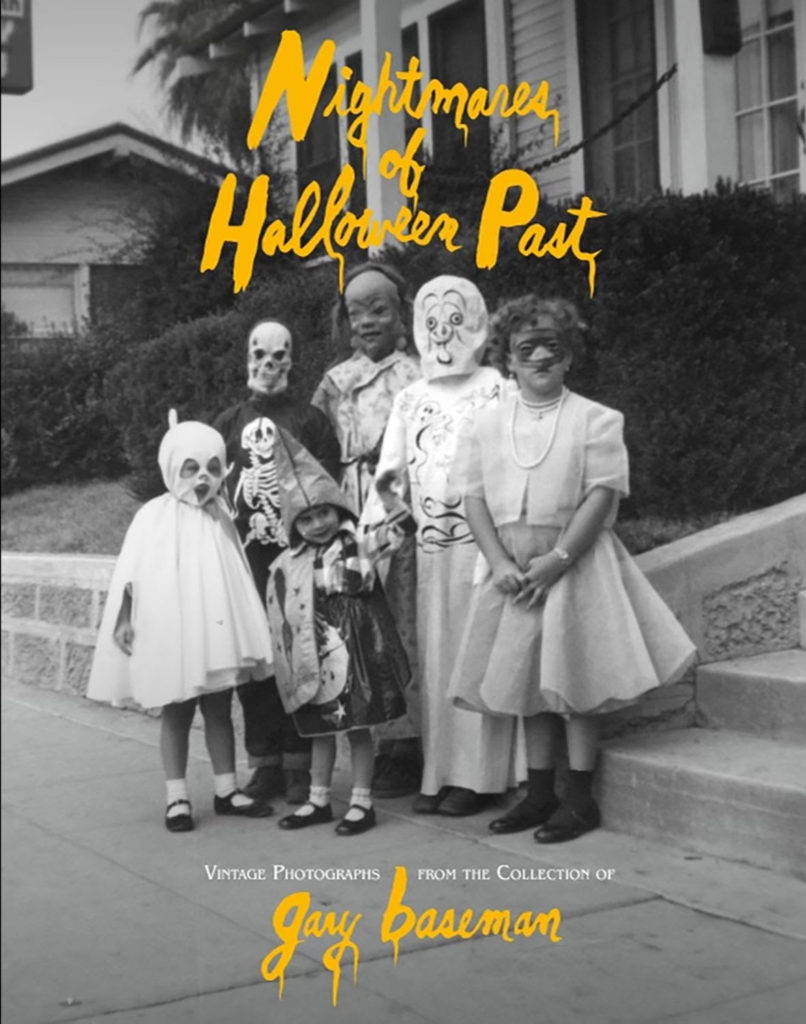
In a coincidence of circumstance, celebrating a particularly glorious black cat with a tolerance for costumes and a flair for the dramatic is not the only instance commemorating Baseman’s love of the spooky season this year. His long-awaited book Nightmares of Halloween Past (Two Fauns Publishing) was also finally released, sold out immediately, and is already facing a second print run. In it, Baseman presents a selection of 300 images culled from his collection of more than 2000 vintage photographs from the early 20th-century to the 1960s, depicting children and adults dressed up for Halloween.
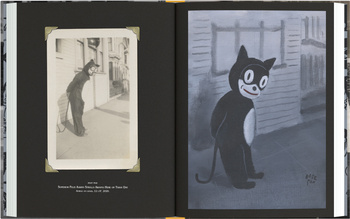
Gary Baseman: Nightmares of Halloween Past (pages 278-279)
Beyond the prevalence of the black cats and skeletons, this cultural archive’s unsettling ethos has directly inspired the characters in Baseman’s paintings and cosmologies over the years, as well as his unique visual sensibility of old-timey quirk, and his love of performance and especially of masks and how wearing a disguise often releases one’s true inner self. “As a child, Halloween was my favorite holiday,” Baseman says. “It was an extension of my love of otherworldly monsters and characters on TV and film… I would play dress-up and be a vampire, a cowboy, a Martian, or Superman…” To that point, there’s a lot of simple, vintage, homemade joy in this book of found, almost entirely anonymous images from across American history.
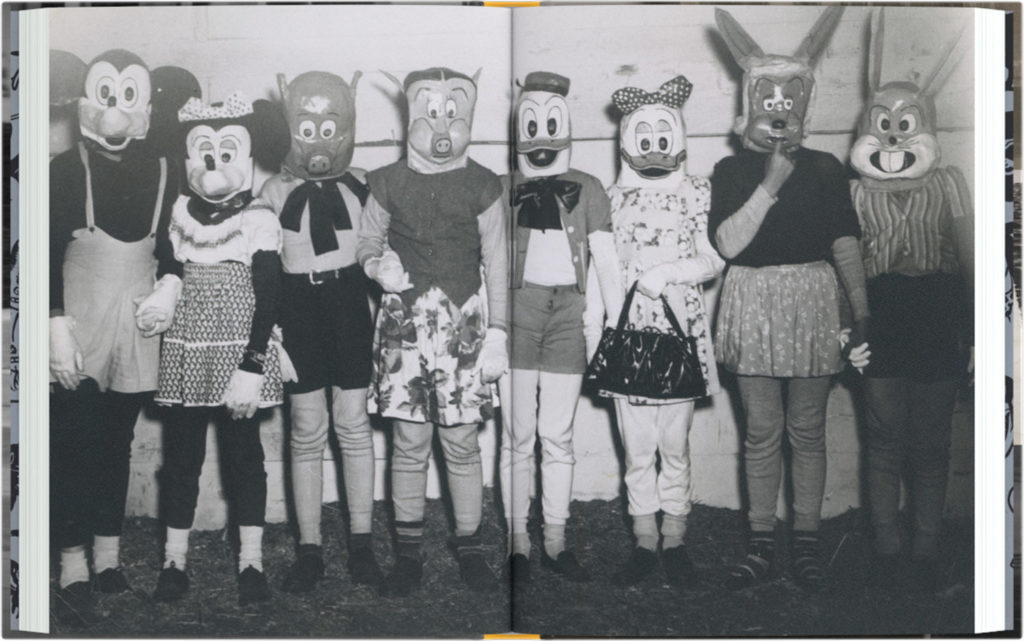
Gary Baseman: Nightmares of Halloween Past (pages 78-79)
As such, the genre is also a sharp prism through which to witness American culture and its evolution; many of these images are not only eerie but outright disturbing. Halloween costuming can be a real epicenter of racism, sexism, and cultural appropriation — even to this day — and some of that is in the book, too. Actually that’s how it lost its first publisher, over concerns about those problematic aspects of the discourse, and despite the presence of a good deal of thoughtful personal and scholarly writings throughout the hefty, almost 300-page volume.
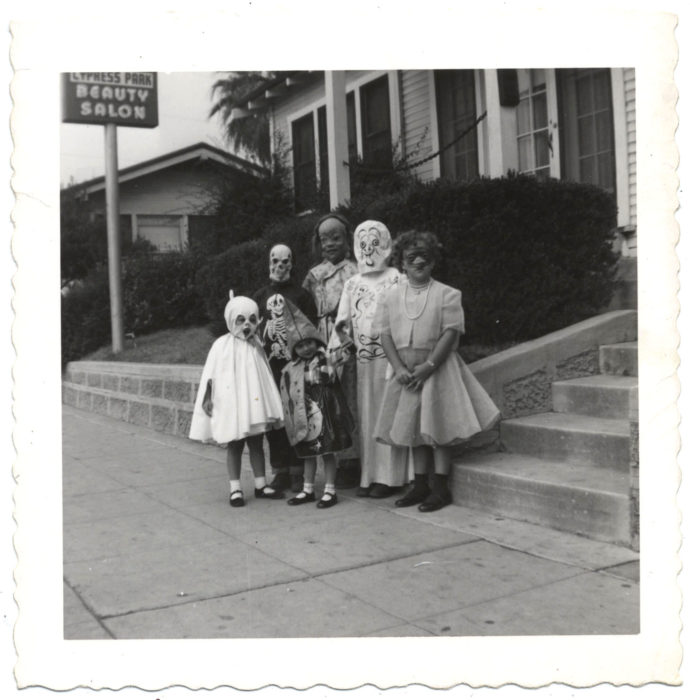
Gary Baseman: Nightmares of Halloween Past
Phyllis Galembo, an artist who writes expertly about the history of Halloween costumes, traces a fascinating timeline back from modern-day American-style Halloween to Celtic, Druid and later Guy Fawlkes and harvest season fetes, all of which conflated threads of tradition and ritual, distilled to its essence — disguises, bonfires, costumes (first handmade, later commercially produced), and legends of roaming spirits. Eventually as Halloween became more and more mainstream, the costumes themselves began to reflect not only the scary origins but increasingly a more upbeat engagement with popular culture — politics, comic books, sexuality, freedom; but also racial stereotypes ranging from what we now engage with as deeply irritating cultural appropriation at best to extremely offensive in any timeline at worst.
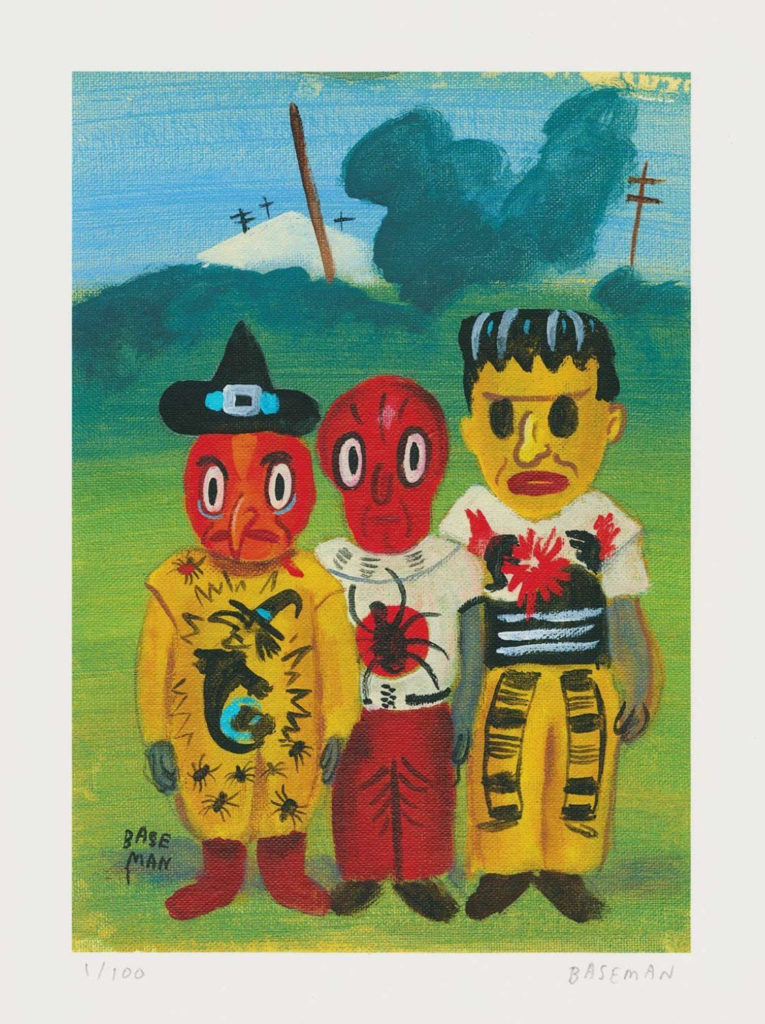
Gary Baseman: The Bad Luck 13 Monster Gang
Catherine Zuromskis, an art historian who writes on the history of early and vernacular photography, pens a warm and thoughtful essay linking the rise in popularity of the holiday and of photography, as if the echo chamber of performing for the camera amplified the experience and its importance in childhood and society. “A worn and creased black-and-white photograph with a rectangular white border depicts two children dressed in pointy hats, cardigan sweaters, and black tights standing in front of a white clapboard house,” she writes. “Their sweetly pudgy, diminutive bodies denote their youth, but their faces are obscured by white masks. They are perhaps meant to be clowns or possibly gnomes… The snapshot is familiar — children dressed in costumes are a common domestic photographic convention — but it is also vaguely unsettling.”
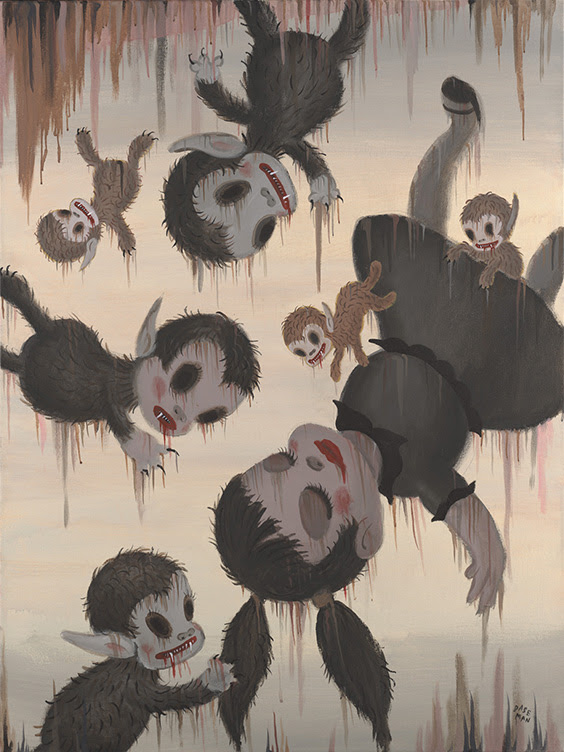
Gary Baseman: Descent of the Truly Vicious
Taken together, across the book and the show, what emerges is a more complex portrait of the artist as a young man who lived much of his life anchored in a rich fantasy world of costumes, characters, fantasies, heroic exploits, role play, and a level of mischievous curiosity that instead of killing the cat, gave it life — nine lives, actually.
Follow the continuing adventures of Blackie in the great beyond, and see how the new little resident monster Bosko is faring, at garybaseman.com.
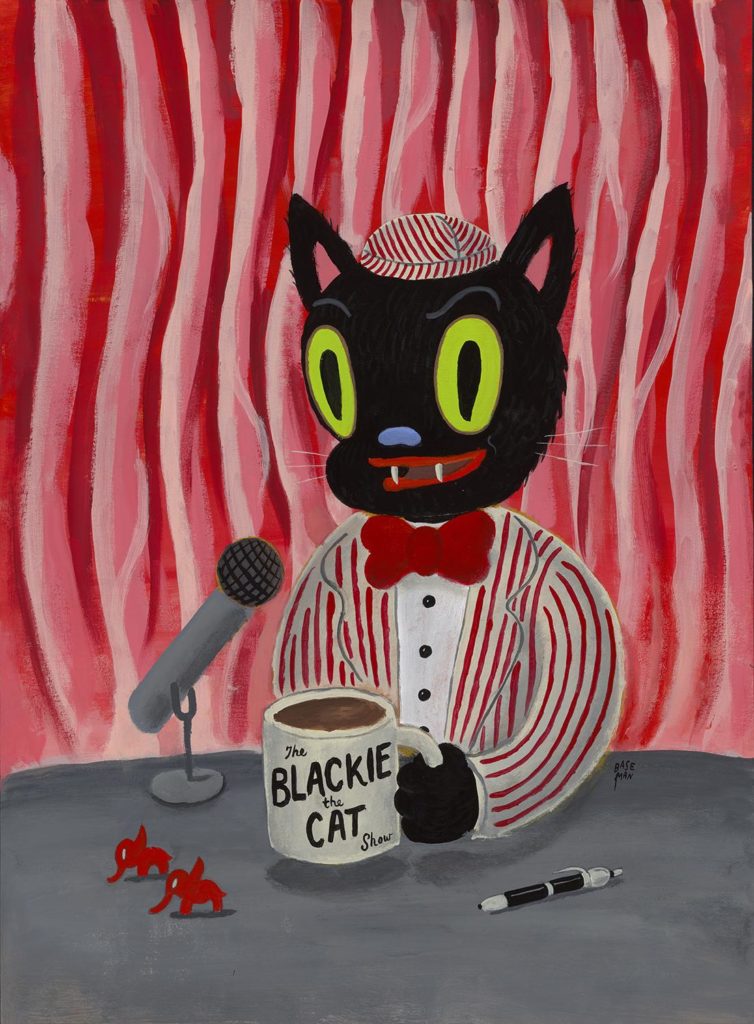
Gary Baseman: The Blackie the Cat Show, 2022
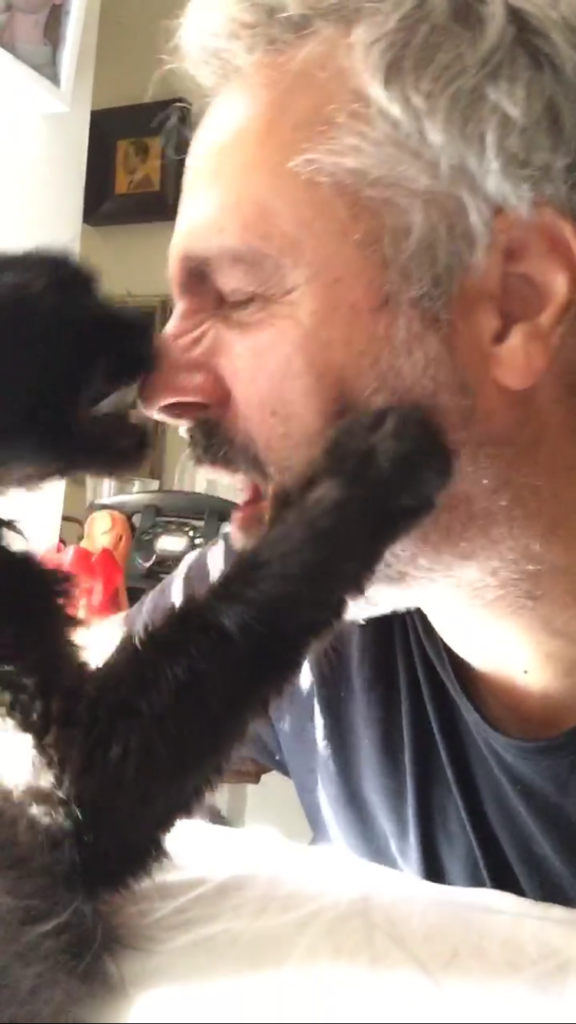
Gary and Blackie
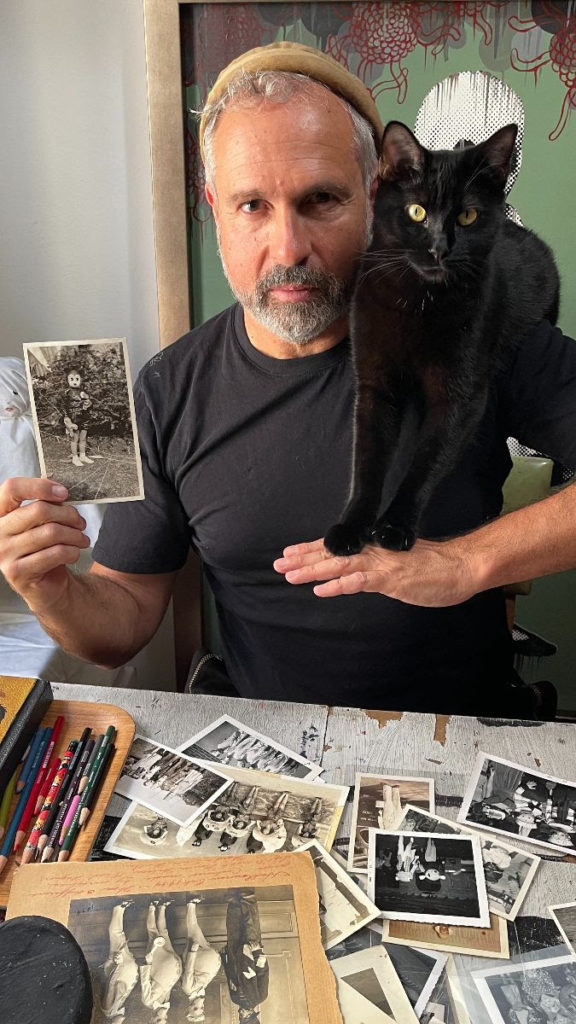
Gary and Bosko
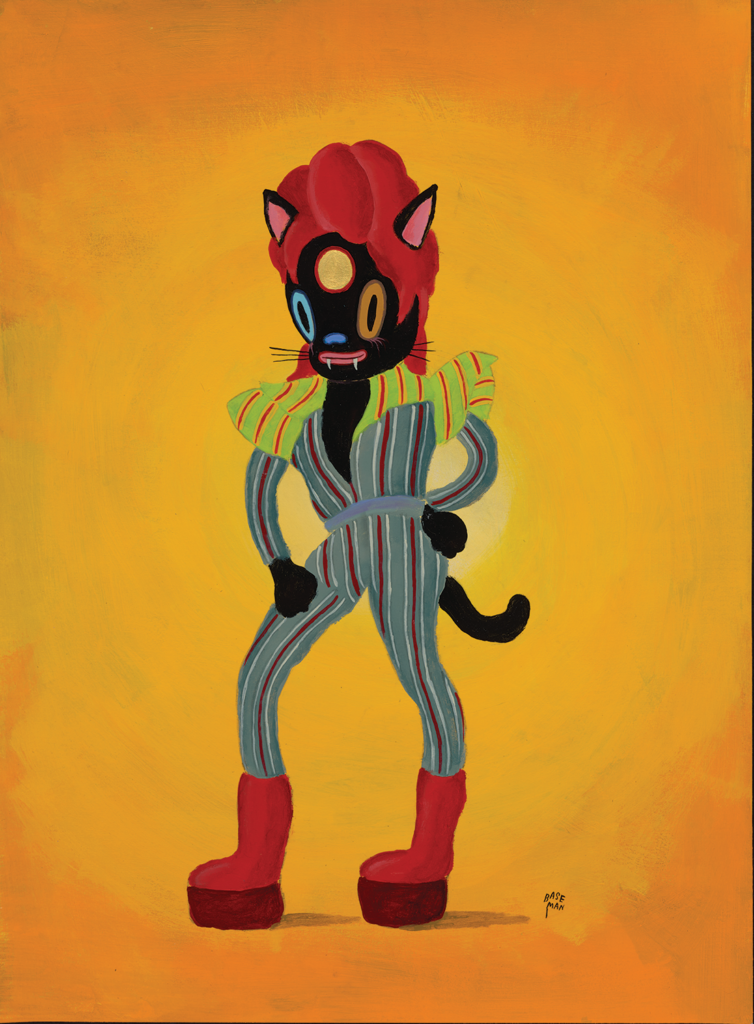
Gary Baseman: Blackie Stardust, 2022
Editor’s note: The disclaimer below refers to advertising posts and does not apply to this or any other editorial stories.
Advertising disclosure: We may receive compensation for some of the links in our stories. Thank you for supporting LA Weekly and our advertisers.

